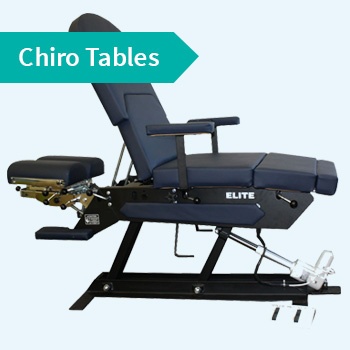
A new patient comes to your clinic. You may not realize it, but absolutely everything counts!
What does their first impression say about your clinic, your service?
Do you have a messy waiting room? Is your front desk team flustered and short with their communications? Are your clinicians on time or late with with their appointment?
Like I said, absolutely everything counts!
People make judgements within seconds of meeting, seriously, you have like 30 seconds to make a great impression and research shows that first impressions are hard to change. And in clinical practice, those first impressions go beyond the front desk and into your treatment room.
Being that I’ve worked with countless clinic owners, I know that in most clinic’s 40% or less of patients graduate from their treatment plans. That’s A LOT of lost patients and revenue. It seems to be a major struggle for clinicians to get their patients to commit to a care plan.
One of the major problems is that the clinician rushes the assessment and spends way too much time doing, and talking about, the diagnosis. Number one, the patient wants to feel cared about, so you need to get the patient to trust you and believe you are their best solution to their health problem. Number two, as a clinician you need to tell the patient exactly how long it will take and get them engaged and accountable to your treatment plan.
It’s called being patient-focused. It’s also called being focused on exceptional patient experience.
And here’s the thing: “Almost 9 out of 10 consumers say they would pay more to ensure a superior customer experience.” ~ Helpscout
So, we’re going to solve this problem so you can boost your graduation rates and here’s what we’re going to cover:
- The CarePath Framework - 8 steps to a kickass assessment
- How to get a patient to trust you within the first 5-10 minutes of contact
- How to plan effective treatments that patients will commit to
- How to get them to book the entire treatment plan on the first day
- And much, much more
Sounds like a winning situation right? It is!
So what are we waiting for...
The CarePath Framework: 8 steps to a kickass assessment
I love using frameworks and models to guide practice because they are based on systems that work! We don’t have to ‘wing it’ because there are these powerful models and frameworks we can draw from. For example, the CarePath Framework.
The CarePath framework provides a step-by-step action plan for patient assessments:
ConnectAuthority
Results
Evaluate
Plan
Accountability
Tell
Hello
I’ve used the CarePath Framework with many of my clients where I’ve run workshops with their physiotherapists, chiropractors, massage therapists, and naturopathic doctors. At the workshops we'd go through this framework and then get everybody to role play.
If you're not doing this with your teams, you should because it really boosts patient engagement. And of course, we’re going to go through each of the steps together now, so you can use these in your own clinic for better results.
Step 1: Connect
Making a true connection is the first part of establishing an authentic relationship with the patient. Start by making eye contact, smiling, be attentive, and most importantly, listen. These are simple traits we use to connect with people on an everyday basis.
People like people who are like them, so when reviewing new patient paperwork, find something in common with them such as hobbies, sports, kids, recreation activities, upcoming holidays, education, school, friends, work, etc. Develop and connect with them in a sense of community and shared interests.
You most likely already know this, but at the end of your SOAP notes, always make note of any personal topics you should talk to them about on their next visit - to help build a stronger relationship.
People LOVE to hear their own names. For, a person’s name is the sweetest sound and most important word in the human language for them to hear.
Addressing a person by name also happens to be the most effective way to show a high level of politeness and it also builds trust as well. When you use the patient's name at least 3 times during your assessment, they will value and more readily accept your treatment recommendations.
You also want to ask them "Have you had physiotherapy or chiropractic before? How did you do?" so you understand WHY they stopped going there and what you shouldn't do.
Here are a few question other questions you should ask:
- On scale of 0 to 10, how committed are you to getting rid of this problem. What would it take for a 10?
- Do you see….? How does this effect you?
- Are you afraid this will get worse if you don’t do anything about it?
- Do you want a quick fix or do you want a long term solution?
- Is there a certain time you want to achieve this?
- If you could wake up tomorrow morning and your pain was gone, what would you do tomorrow that you’re not doing today (this helps them identify their wants)
Step 2: Authority
Your responsibility as a healthcare provider is to be your patient's most trusted health advisor. Therefore, you want to be the authority figure by exerting your confidence on the situation. By helping them instill confidence and trust in you.
One of the best ways to do this is to show empathy and talk with confidence.
Empathy is the ability to walk in the other person’s shoes, to share and understand their experience.
You need to listen to what they say and reassure them they are not alone. Give them plenty of results and social proof that you are the best choice for their health problem.
Your clinic should show ample proof - certificates on walls, patient testimonials (or documentaries), framed newspaper clippings, a wall of fame for local atheletes.
Even better is share simliar client stores and how you fixed them within months. Or how you treat local athletes and doctors.
Step 3: Results
Give them instant results so they can feel better after their first visit. Chiropractors are really good at this. It's not how long they stay at your clinic, it's whether they feel good after their first visit.
You need to find where it hurts and rub it. Give them instant pain relief and you will be trust right away. You want to test and treat and retest. Get them to say "wow that feels better".
Here are a few things you can do:
- Manual Therapy or Adjustments
- Test & Retest
- Shockwave Therapy
- Tape them (CLICK HERE to see our big selection of athletic tape)
- Apply biofreeze (CLICK HERE to grab some biofreeze)
- Cupping
- Apply Heat
- Shockwave Therapy
Step 4: Evaluate
This is what you already do so I'm not going to talk too much about this. Just understand that it represents only 1 out of 8 steps so don't make it your ONLY step.
Step 5: Plan
It is unlikely that anyone can get better in a few visits, so set their expectations by explaining your treatment plan and how long it will take and what successful treatment looks like. Try to relate the benefits of your treatment plan to their personal wants.
During the conversation, ask for their approval and commitment through simple questions:
- Does this make sense?
- Can you see why we are doing this?
- Do you want a quick fix or a long term solution?
- Are you still 10/10 committed to getting rid of this problem? Gauge their level of commitment to be held accountable and if the answer is not a 10, discuss the obstacles that are in the way.
Step 6: Accountability
Once you’ve discussed the treatment plan, hold your patients accountable by getting them to sign the treatment plan. The act of getting the patient to sign the treatment plan is crucial because it solidifies the plan & commitment in their minds. Make sure you give them a photocopy of the treatment plan so they can bring it home with them. Check out this handy patient compliance form
Step 7: Tell
Talk about your waitlist (even if you don't have one) and why they need to book now. Tell your patient you will get the front desk team to book sessions for the entire treatment plan BECAUSE YOUR SCHEDULE FILLS UP QUICKLY.
YES, walk the patient to the front desk, even if you are super busy.
Small, trivial actions like this go a very long way to patient experience.
Treat your patient exactly how you would treat your grandma if they were to come to your clinic. Would you walk your grandma to the front desk? Of course you would!!!
When you arrive at the front desk, talk to the front desk team and tell them (in front of the patient): “Judy is going to book a number of sessions for the next month to go along with this treatment plan (hand staff your treatment plan). Megan will take care of you now Judy and I’ll see you in a few days at your next appointment.”
Don't let patients dictate the rules. Remember, you are their most trusted health advisor. They have come to see you for advice and guidance. Be an authority and tell them what to do.
Step 8: Hello
Follow up with your clients to really show you care.
Take 2 minutes and call them the next day to say hello and ask how they are feeling.
The crazy thing is no healthcare practioner does this so if you do, they will be blown away. Imagined if your medical doctor called you the next after their appointment. How would that make you feel?
It’s a simple courtesy that goes a long way toward developing that genuine relationship connection that will make you stand out of the crowd and keep them coming back for more!
Rather than spending money on continuously finding new patients, ensuring the ones you do have see through their treatment plans and graduate, instantly upscales your revenue.
More than that though, it creates raving fans that will go out and help market your business by referrals. They will share how much they enjoyed their experience and how you helped them overcome their pain and problems.
Seriously. When you use this killer 8 step assessment, you are going to see your clinic outcomes exceed both your, and your patients, expectations on every level.
RELATED ARTICLES
Why Do Patients Self Discharge From Treatment and What To Do About It?
How to Measure Patient Satisfaction and Boost Your Referrals
Supercharge Your Patient Retention with PVA
Clinic Owner Interview Series: #4 Darin Cohen - Why I decided to have business partners
Be Better At The Front Desk: 5 Easy Tactics You Should Know








